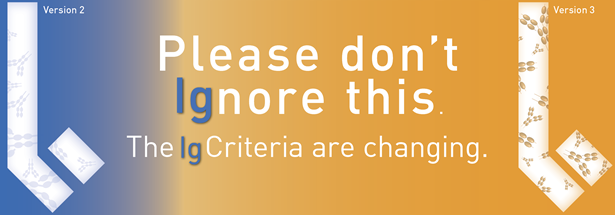In this October 2018 issue:
- System Activity Update
- NSW go live update
- Facility Administrators - Managing Access Requests
- Provision of Facility Administrator Contact Information
- Ig Governance Update
- BloodSTAR 2.8 release
- Download BloodSTAR News
 pdf (309.12 KB)
pdf (309.12 KB) - Previous editions
System Activity Update
As of September 2018 there are:
- 8,635 patients with active authorisations and
- 9,500 registered users accessing BloodSTAR as Authorisers, Medical Officers, Nurses, Admin Support or Facility Administrators.
During September there were 687 initial authorisation requests and 10,439 dispense episodes of IVIg/SCIg in BloodSTAR nationally.
NSW go live update
The NBA and the NSW Ministry of Health (NSW MoH) have been working closely to implement BloodSTAR in NSW. BloodSTAR is now scheduled to go live in NSW on 22 October 2018. A number of preliminary system demonstrations for NSW MoH officers and members of NSW Local Health Districts (LHDs) have been conducted. State-wide training for both public and private NSW Prescribers, Nurses and Dispensers is being conducted between 17 September and 9 October via face to face and online demonstrations. NSW Health staff can contact the LHD BloodSTAR Implementation lead for more information. If you are working in a private setting, and wish to organise training please contact the NBA Blood Operations Centre support on 13 000 BLOOD (13 000 25663) or at support@blood.gov.au.
The NBA is working to upload data on NSW facilities, clinicians and patients into BloodSTAR by 22 October 2018. This will largely be an automated process and the majority of public facilities and clinicians will NOT be required to register themselves. All other users who do not receive an email from the NBA pertaining to their BloodSTAR access prior to 8 October will need to register themselves. Self-registration is open from 8 October.
If you are a public sector clinician and have a question about BloodSTAR, please contact your LHD BloodSTAR project team.
NSW private Ig facilities, clinicians and dispensers - Register Now!
In July 2018, the NBA wrote to NSW private facilities, clinicians and dispensers and invited them to self-register for BloodSTAR. Registration for facilities can be done by filling in a facility registration form on the NBA website at https://www.blood.gov.au/registering-your-facility-bloodstar.
Registration for BloodSTAR users (prescribers, nurses/admin support staff and facility administrators) is a two-step process. If you are a potential BloodSTAR user, first, create a BloodPortal account at https://portal.blood.gov.au/ if you don’t already have one. Once logged into your account, click on the BloodSTAR tile to submit a request for access to your facility’s BloodSTAR site. Please note: Your facility needs to be registered on BloodSTAR before you can submit an access request. Further information can be found at https://www.blood.gov.au/bloodstar-support-materials.
Pathology/pharmacy organisations that use BloodNet do not need to register for BloodSTAR. A BloodNet tab entitled ‘Authorisations’ has been made available and is interfaced with BloodSTAR to provide dispensers with the capability to:
- Check the authorisation status and approved doses for a patient;
- Receive dispense requests for immunoglobulin; and
- Record the dispense of immunoglobulin to authorised patients
Private pathology and pharmacy organisations that issue immunoglobulin products and are set up as an Australian Health Provider (AHP) with the Blood Service but are not already set up in BloodNet must organise to do so by contacting the NBA Blood Operations Centre support on 13 000 BLOOD (13 000 25663) or at support@blood.gov.au .This support line is available for new and existing users 24 hours a day, 7 days a week.
Facility Administrators - Managing Access Requests
The main responsibility for BloodSTAR Facility Administrators is to manage user (medical officers, nurses and admin support staff) access at their site(s). This includes assessing and either approving or rejecting new users and removing a user’s access when it is no longer required. If you are a Facility Administrator, ensuring user access to your site is current is a responsibility under the national Ig governance policy and is imperative in protecting sensitive patient information.
Some BloodSTAR users, in particular medical officers work at multiple facilities and therefore have access to multiple sites in BloodSTAR. Deactivating a user’s access at one site will not affect the Medical Officer’s access to other sites.
More information on managing BloodSTAR user access is in the ’Reviewing User Access Requests’ tip sheet available at https://www.blood.gov.au/facility-administrator.
Provision of Facility Administrator Contact Information
BloodSTAR Facility Administrators have the primary responsibility of assessing and either approving or rejecting access requests to a BloodSTAR site. When an access request has been submitted, the system sends an email notification to the facility administrator. While an access request is pending action by the facility administrator, medical officers are limited to only submitting authorisation requests for new patients. This means they will not be able to view existing patient records or submit any additional or dose change requests for these patients. In cases where access to existing patient records is required urgently, the NBA support team will provide the medical officer with contact details for the facility administrator(s).
Please note: Facility Administrator contact details will not be provided after hours or on weekends.
If you are a Facility Administrator, please ensure your contact details are up to date, and are those that you wish to be contacted on by users enquiring about the status of their request. To update your contact details, log into BloodSTAR and click on the ‘My Account’ menu at the top of the screen and click on ‘Update Contact Details’
Ig Governance Update

Version 3 Criteria coming soon!
The Criteria for Immunoglobulin Use in Australia (the Criteria) is changing to Version 3. These changes will apply in BloodSTAR from 22 October 2018 through the release of BloodSTAR version 3.0.
For more information please visit www.blood.gov.au/igcriteria-version3
Why is the Criteria Changing?
- To align with new evidence
- To ensure those who’s health is most likely to be improved with Ig therapy can get it
- To manage the growth in demand for this precious, human-derived product.
How will the changes affect prescribers?
- Some current authorisations will move to the new Criteria automatically, while others may require prescribers to provide more information at the next patient review.
- Indications will be more descriptive to help prescribers select the appropriate one for each patient.
- The qualifying criteria will be more definitive in some conditions and additional evidence may be required.
- In a small number of situations funding of Ig therapy has been withdrawn.
- There will be better guidance for patient eligibility and requirements for patients to trial off Ig therapy.
- A formal review of patient outcomes will need to be reported periodically in order to continue authorisation to receive funded Ig, for all ongoing conditions.
- Reporting of review outcomes will be available for all conditions, not just those with an option to continue treatment.
- Dosing controls have been reviewed and are more definitive where appropriate.
Note: For NSW health providers –existing patient authorisations will automatically be migrated to BloodSTAR before the new version is released. Once this happens authorisations will move to the new Criteria as described above.
How will the changes affect patients?
- In some conditions patients may need to be diagnosed or reviewed by particular types of specialists, which may be different from current arrangements. some patients may benefit from telehealth or remote reviews.
- There are some changes to qualifying criteria for certain conditions
- More clinical information may be needed to support initial or ongoing authorisation to receive funded Ig.
- In a small number of cases patients may need to receive alternate therapies as funding of Ig may no longer be supported for some medical conditions.
Where can I find more information?
For more information and updates, visit www.blood.gov.au/igcriteria-version3
BloodSTAR 2.8 Release
The National Blood Authority (NBA) continues to improve and enhance its blood sector systems to ensure efficiency and support to end users. On 1 July 2018, BloodSTAR version 2.8 was released with a range of new functions and enhancements:
- A new ‘Help’ page which lists answers to frequently asked questions and links to relevant support materials;
- The display of patient’s names has been swapped to be consistent with most health systems. The patients family name now appears first and is capitalised;
- The current authorised dose is now displayed for medical officers on continuing authorisations, dose changes and additional dose requests;
- The system now identifies if the Treating Medical Specialist nominated on an authorisation does not have a current AHPRA registration for an applicable specialty as required by the National Policy; and,
- Facility Administrators can now pre-approve a Medical Officer for access to BloodSTAR. This means the Medical Officer will have full access to BloodSTAR as soon as they register.
For further information
Further information on BloodSTAR is available online at www.blood.gov.au/bloodstar or by contacting the NBA on 13 000 BLOOD (13 000 25663) or support@blood.gov.au.
Previous editions
To read or download previous editions of BloodSTAR News, click on the relevant link below:

